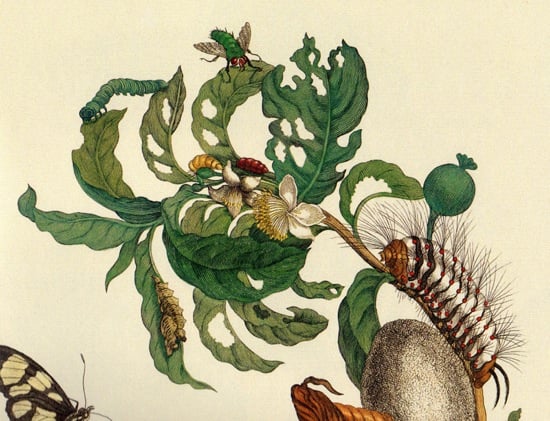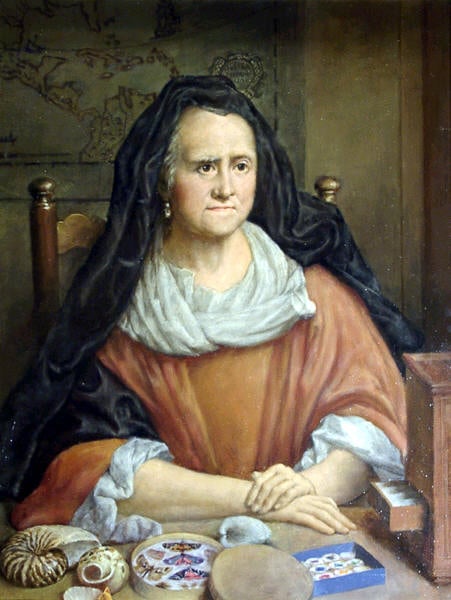Maria Sibylla Merian
By:
April 2, 2011
Even today, a sketch of her biography would mark her an eccentric trailblazer: a divorced woman of 52, after a stint in an anti-materialist religious commune, leaves the comforts of Amsterdam for a two-year sojourn in Surinam in order to paint insects hitherto uncataloged by science. That MARIA SIBYLLA MERIAN (1647-1717) did this in 1699 is a genuine shock. Her patience over chrysalis and cocoon, observing the stages of insect metamorphosis (while conventional wisdom held that insects materialize as a motile effluvia of mud) was an early adoption of scientific method. At the same time, she saw her botanical and entomological illustrations as an act of religious devotion: how superb, to curate God’s magnificent fingernail clippings. Her most famous print features a clutch of spiders; a hummingbird lies supine, like an overcome lover, under the legs of a tarantula that squats oppressively on its chest. Each articulated legs curls over like the fingers of a hairy, epicure hand. Streams of ants attack everything that moves, while other spiders are splayed above like predatory stars, the firmament a delimiting collage of web. But this image, with its incessant drama, every piece of the machine at war with another, isn’t typical of her work. Her ordinary mode was calmer, though never merely decorative. As her biographer Kim Todd points out, the plant leaves in her pictures usually have holes nibbled in them: they aren’t just a verdant frame or an aspiring pedestal for her caterpillars and butterflies. They’re nourishment, part of the continuity of transformation that fascinated her, the substantiation of matter to wing. Merian’s world was patiently tattered, impregnated with a fecund rot, beautiful and useful.
***
On his or her birthday, HiLobrow irregularly pays tribute to one of our high-, low-, no-, or hilobrow heroes. Also born this date: Serge Gainsbourg and Marvin Gaye.


